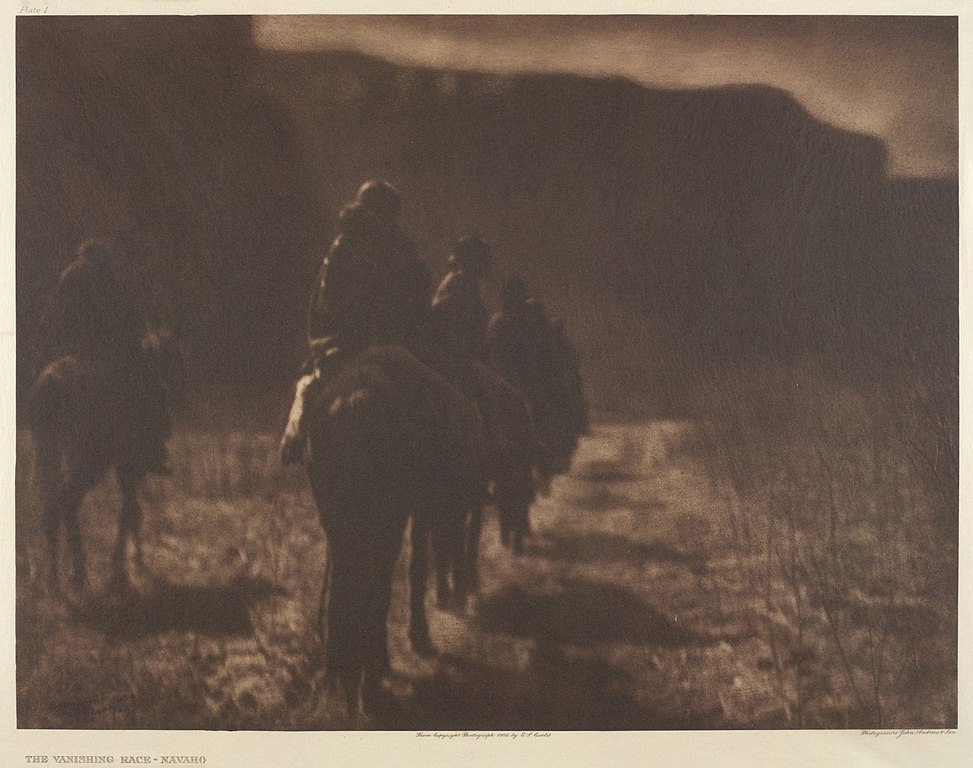
- Details
- By Levi Rickert
Opinion. Photographer Edward Curtis spent 30 years photographing American Indians. In 1904, Curtis published “The Vanishing Race,” considered his signature piece. It became the underlying reason for him to continue capturing photographs of American Indians before, in his mind, they became a people relegated to history.
Even President Theodore Roosevelt, a supporter of Curtis’s efforts, thought American Indians were “perishing” and sent Curtis a letter that said “the Indian, as an Indian, is on the point of perishing, and when he has become a United States citizen, though it will be a much better thing for him and for the rest of the country, he will lose completely his value as a living historical document.”
While American Indians were not made United States citizens until 1924 through an act of Congress, the Census Bureau in 1900 enumerated the American Indian population as being 237,200. Estimates of the Indigenous population were as high as 112 million in 1492 when Columbus sailed the ocean blue. Other experts say the number was closer to eight million. Regardless, the 1900 Census figure of less than a quarter million convinced those at the turn of the century that the American Indian population would disappear.
This week, the 2020 Census reported that the population of American Indians and Alaska Natives is on the rise, which reminds me of the Mark Twain quote about “the report of my death was an exaggeration.”
This good news is backed up by data released Thursday showing the American Indian and Alaska Native population, when counted alone and not combined with any other race, was 3.7 million, which is 1.1 percent of the total population of the United States. In 2010, there were 2.9 million American Indians and Alaska Natives. The growth rate over the past decade was a 27.1 percent increase.
More surprising, the American Indian and Alaska Native population, when combined with other races and ethnicities, rose an astounding 160 percent from 2010 to 2020. The combination population was 9.7 million people — or 2.9 percent of the total population — up from 5.2 million in 2010.
Even with the Indian Country increase in population, some pretend Curtis was correct and believe the American Indian vanished. This is what leaders of the South Dakota Department of Education believe and what they want K-12 students of their state to think.
News broke this week that the state’s education department eliminated 18 Indigenous-centered learning objectives from social studies standards in the curriculum of K-12 students recommended by a workgroup of 46 educators from around the state selected by the Department of Education. More specifically, the department scratched all mentions of the Oceti Sakowin Oyate, otherwise known as the People of Seven Council Fires or the Sioux Nation.
“I was disappointed, but not surprised to learn of the changes to the state standards. It is a blatant attempt to minimize and devalue the important contributions of the Oceti Sakowin (Seven Council Fires) to the history of South Dakota and the region more generally,” South Dakota state Sen. Red Dawn Foster (Lakota/Dine’) told Native News Online. “This is also a failure to recognize the significant electoral power of Natives in South Dakota. We must make our voices heard, loud and clear in every election or continue to be at the mercy of mean-spirited partisan politics.”
Cheyenne River Sioux Tribe Chairman Harold Frazier condemned the Department of Education’s actions.
“Unfortunately, the bureaucrats and politicians who commissioned the workgroup gutted the portion of the curriculum regarding our Indigenous people,” Frazier said. “There is so much that must be taught to the children in order for them to understand the world they will inherit, and it begins with an understanding of one another. Removing the important lessons of who we are, where we came from and why things are the way they are, robs every young mind of the necessary understandings to overcome the hurdles of conflict, genocide, and historical trauma,” Frazier said in a statement.
Chairman Frazier hits harder farther into his statement: “Our children were stolen from us in a past generation, forcefully assimilated or secretly buried in boarding schools under the “kill the Indian and save the man” ideologies, and it would seem that the task to erase them has not ended…”
Erasure of American Indians from history is nothing new.
With our growing population, our voices must be amplified with concerted outrage to stop the politics of erasing Native people and our culture.
More Stories Like This
Technology Rooted in Tradition is Strengthening Cherokee NationThe Lumbee Tribe of North Carolina: #575
Tribes Do Not Need a Greenlight to Build Renewable Energy
Law Should Not Get in the Way When "Manifest-ing Destiny"
Celebrating 35 Years of Gaming Success
Help us defend tribal sovereignty.
At Native News Online, our mission is rooted in telling the stories that strengthen sovereignty and uplift Indigenous voices — not just at year’s end, but every single day.
Because of your generosity last year, we were able to keep our reporters on the ground in tribal communities, at national gatherings and in the halls of Congress — covering the issues that matter most to Indian Country: sovereignty, culture, education, health and economic opportunity.
That support sustained us through a tough year in 2025. Now, as we look to the year ahead, we need your help right now to ensure warrior journalism remains strong — reporting that defends tribal sovereignty, amplifies Native truth, and holds power accountable.
 The stakes couldn't be higher. Your support keeps Native voices heard, Native stories told and Native sovereignty defended.
The stakes couldn't be higher. Your support keeps Native voices heard, Native stories told and Native sovereignty defended.
Stand with Warrior Journalism today.
Levi Rickert (Potawatomi), Editor & Publisher

